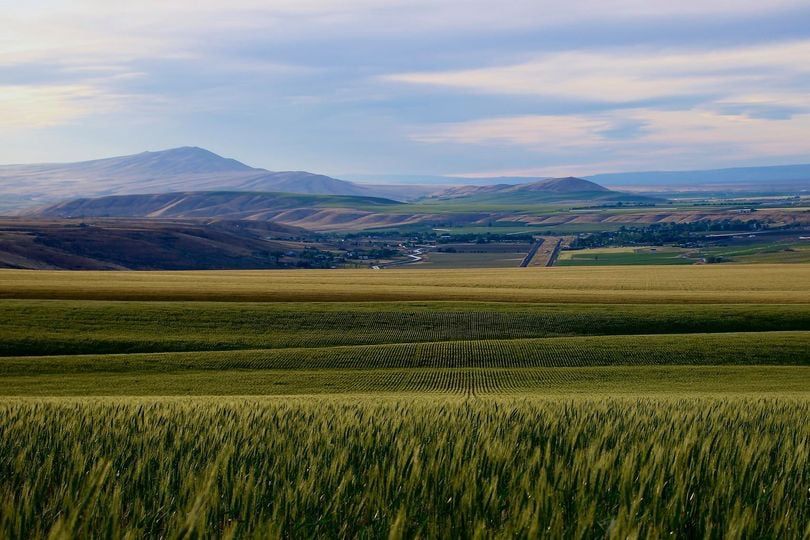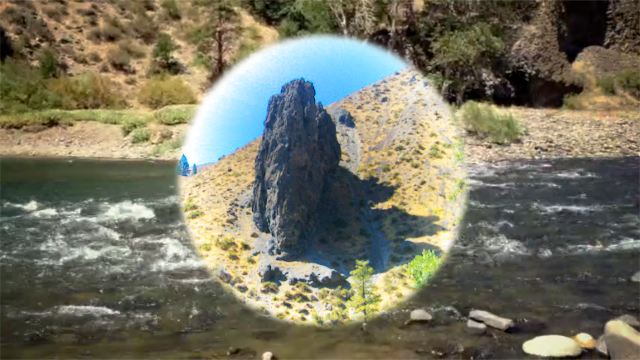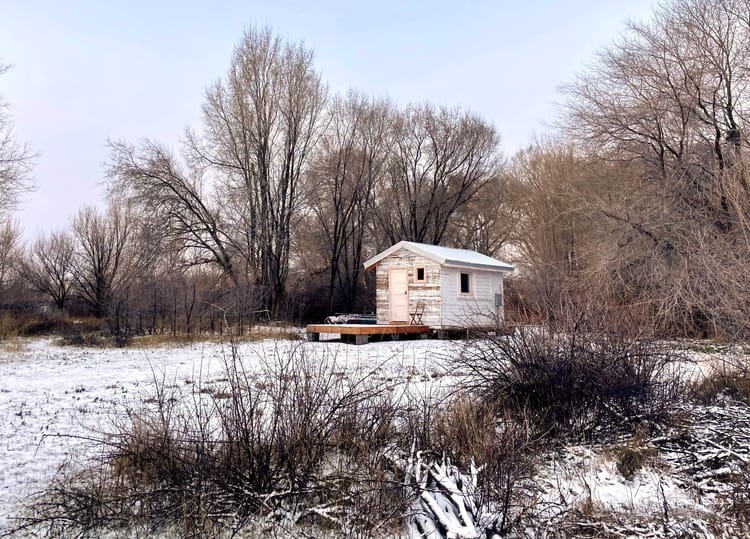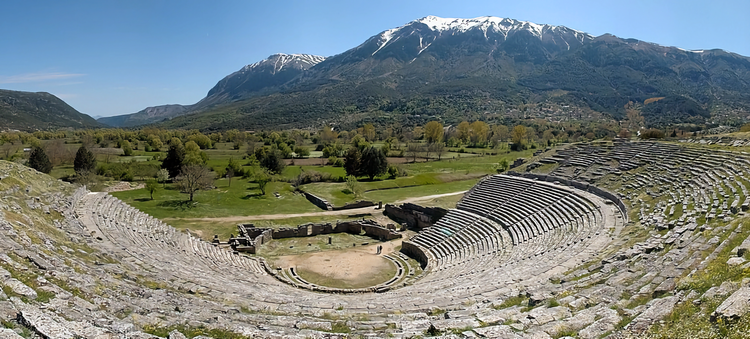The Cabin in My Mind

Before I learned that a central Washington town called Tieton existed, before its development into an informal art colony began, and before my art studio was set up, a cabin somewhere in the Yakima area had already started shifting my attention to a future, but hidden, life direction.
When I opened my October issue of Sunset magazine in 1993 and found the articles about the “1993-94 Western Home Awards,” the tiny, eccentric, concrete block cabin featured on pages 96 and 97 immediately invited me to take a closer look.
With its utility side facing the photographer’s lens, the cabin looked like a small abandoned gas station left behind along a windblown and forgotten rural road now grown over with low wild grasses and tiny wildflowers. But from the cabin’s opposite side, which featured ten-foot high sliding doors that opened to sculpted green hills and blue sky, I saw that it was a perfect getaway for any adventurous spirit who might want to soothe the effects of urban stress with solitude, serenity and simplicity.
The Sunset photos showed two men outside the cabin enjoying the sun and complete silence. I wondered who they were. Seeing them made me long for a place of my own somewhere near that sunny and quiet landscape, that would share at least some of the unorthodox quality of their little cabin. But with my artist and massage therapist income, I knew that fulfilling this dream would be highly unlikely. So I tucked the memory of the cabin away in the “fantasy” file of my brain, and during the soggy Seattle winters, I would often retrieve it to bask in its warm and comforting glow.
I grew up in dry eastern Washington in the small town of Kennewick, whose outskirts to the south were also ringed by rolling hills similar to the ones that surrounded the Sunset cabin.

I never realized how much I was attuned to the stark beauty of those hills until I moved to Seattle. After my mother died, I began returning to eastern Washington every year to visit my father in Kennewick. And in the early summer of 1995, I headed east over the Cascade mountains again, for an extended reunion with him.
I’ve never been an enthusiastic driver, so whether leaving Seattle or returning from Kennewick, my round trip itinerary always followed the same routine. Watch out for big transport trucks. Avoid unknown two lane roads. And most importantly, try to stay in the “slow” lane. I often chuckled to myself that my driving style was similar to one that cartoonist Roz Chast had illustrated in the New Yorker magazine. In it, she pictured an ever-cautious female driver, fists clenched to the steering wheel, looking anxiously out at an endless stream of traffic all around her. The cartoon included the following caption:
She was a right-hand lane kinda gal.
And so was I. After visiting my retired ironworker father for several days and eating the pancakes he made every morning for his incomprehensible, bohemian, only child, artist daughter, I packed up and started my usual return drive back to Seattle, carefully staying in the right hand lane. I had no idea that my habitual lane preference would soon make it easier to navigate an unplanned turn in the road, whose route would provide passing previews of a landscape I would eventually know well many years later.
Just past Yakima, I noticed a large highway sign ahead that I had seen countless times on previous trips west, but had always ignored. This time, as I drew closer to the sign by the second, its message seemed to carry a new tone of insistence: “Next Right. Exit to Highway 12. White Pass. Chinook Pass.” Suddenly, I became aware that one of my familiar “intuitive directives” was speaking to me silently but clearly. “Take that next exit” it said. And since I was already in the right-hand lane, without thinking about it I slowed down and took the next exit around a curve to Highway 12.
I was now traveling west towards unknown mountain roads that were likely to be of the dreaded two lane variety. I was breaking my long time driving rules one after another. What was going on?
The “intuitive directive” I had just received was part of a familiar pattern of engaging with the world that had occured many times before.
Since subconscious communications have been so frequent and quietly insistent throughout my adult life, I’ve learned to respect and actively listen to their messages.
These messages always carry their own logic and purpose, but the time it takes to clarify their meaning can’t be easily predicted. The intention of each message eventually comes into focus according to its own schedule.
As I continued on Highway 12 heading west, the rolling hills to my right grew into a broad, low mountain, and the tiny town of Naches appeared just ahead. I had the sudden thought that perhaps there might be a cheap rental in that town that would satisfy my Sunset cabin-awakened longing for a more rural living space with sun. But when I noticed the abundance of large pickup trucks with elevated oversize wheels lined up at the nearby gas station, I quickly reconsidered. Some local residents might not, uh, welcome a single, female, bohemian “artiste” to their neighborhood.
At the intersection across from the gas station, a sign with an arrow pointed to another town that lay atop a nearby rocky plateau. Maybe those residents would be friendlier, I thought. I had time to quickly note the location but not the name of the town as I passed the plateau. Continuing further on Highway 12, I arrived at a fork in the road that announced two travel options over the Cascade mountains: “Left. Highway 12. White Pass.” or “Right. Highway 410. Chinook Pass.” Since it was too late to turn back to Yakima to take the freeway route to Seattle before dark, I followed another prompting and took the 410 fork.

Just past a curve along Highway 410 where a huge basalt rock rose like a black totem above a pristine stretch of the Naches river, the Sunset cabin photo suddenly popped up in my consciousness more vividly than ever, perhaps jiggled from dormancy and made even stronger by my unplanned high desert travels.

I was on my way back to Seattle now, with the cabin’s warm presence turning slowly in my mind. I had time to think about how its initial appearance in my Sunset magazine had already activated a small ripple effect of unforeseen alternatives in my future living plans. The spontaneous “cheap rental in Naches” idea was proof enough for me.
When I got back to Seattle, I tucked the cabin’s visual imprint back into my mental “fantasy” file, now labeled with new keywords pertaining to change: “sun,” “warm,” “rolling hills,” “quiet,” and “getaway.” It seemed to me that some invisible pattern of movement was being orchestrated beneath my consciousness for future discovery.
I didn’t know what was ahead, but based on my past experience, I knew I would recognize any important intuitive prompting in the future. And when it came knocking, as always, I would open the door—and listen to its message.





Member discussion